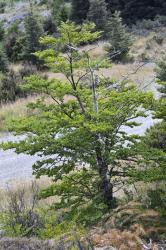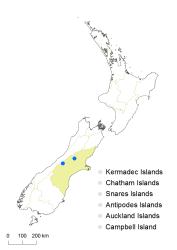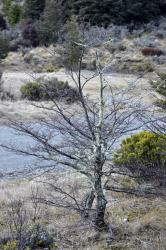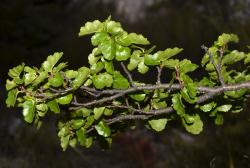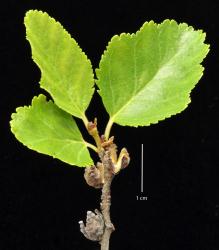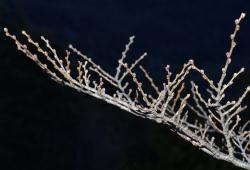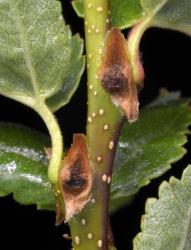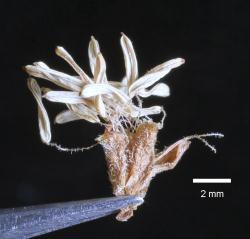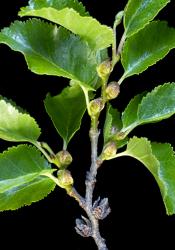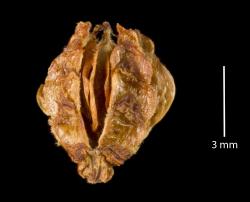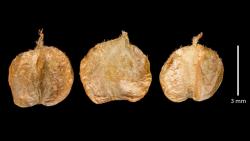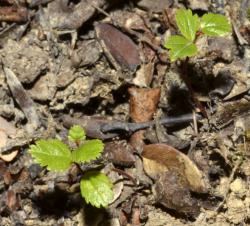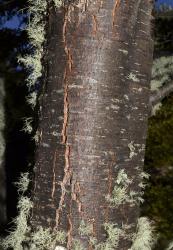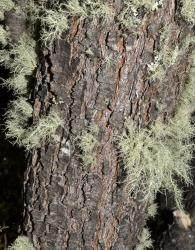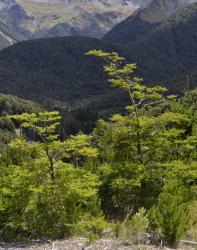- Taxon
- Gallery
- ≡ Fagus antarctica G.Forst., Commentat. Soc. Regiae Sci. Gott. 9: 42, as 24 (1789)
Deciduous shrub to medium sized tree, 3–20 m high; trunk straight cylindrical, short-boled or multi-stemmed; crown spreading. Young branchlets terete, grooved, grey to red-brown or dark red, with white pubescence. Stipules caducous, peltate, margin fimbriate, 4–7 mm long, ovate or unevenly elliptic. Leaf lamina 6–30 × 6–20 mm, broadly ovate or ovate-elliptic, thin, veins distinct, domatia absent; adaxially glossy green, glabrescent; abaxially lighter green, pubescent on veins, otherwise glabrescent; margin undulate to lobed, irregularly double-dentate, teeth subacute to obtuse, margin minutely ciliate; apex obtuse; base oblique; petiole 1–6 mm long, pubescent. Staminate inflorescences, 3–8/branchlet, on short peduncles; perianth campanulate, 5–6 mm long, green to stramineous, with 5 or 6 obtuse to subacute lobes, margin densely ciliate. Stamens 5–13; filaments 5.5–6 mm long, sparsely hairy; anthers, 3–4 mm long, glabrous, pale yellow or red. Pistillate inflorescences, 3–5/branchlet, sessile; dichasium ovoid or subglobular with 2 or 3 sessile flowers/cupule, flowers trimerous and dimerous, pubescent, one trimerous flower sometimes missing or atrophied. Mature cupule, 5–6 mm long, valves 4, elliptic, coriaceous, resinous, densely pubescent, apex obtuse to subacute; lamellae in 3 or 4 rows/valve, dark red, attenuate to acute, margin ciliate. Nut 3.5–4.5 × 3.0–4.5 mm long, triquetrous or lenticular, glabrous to pubescent, ciliate on wings above, tan brown to red-brown.
Bark: Bark on young trees smooth, grey or purplish-brown with prominent horizontal white lenticels; bark on old trees rough and fissured, grey.
Distinguished from all New Zealand beech species in being deciduous and having plicate leaf vernation, not found in any species of New Zealand beech. Also by its smooth purple-grey bark with distinctive white lenticels on young trunks and stems.
South Island: Canterbury (Mistake Flat, Havelock River; Broken River, Craigieburn Range).
Seedlings and saplings establishing from cultivated plantings at two inland montane sites. One site is on a river terrace in the Havelock River at 800 m a.s.l., and the other on a hill planting of exotic trees in the Broken River catchment of the Craigieburn Range at 976 m a.s.l.
CHR 482884, M. Harding, 9 May 1998 (cited in Heenan, P.B.; de Lange, P.J.; Glenny, D.S.; Breitwieser, I.; Brownsey, P.J.; Ogle, C.C. 1999, p. 636).
Flowering: Oct.–Nov. (mast seeding)



